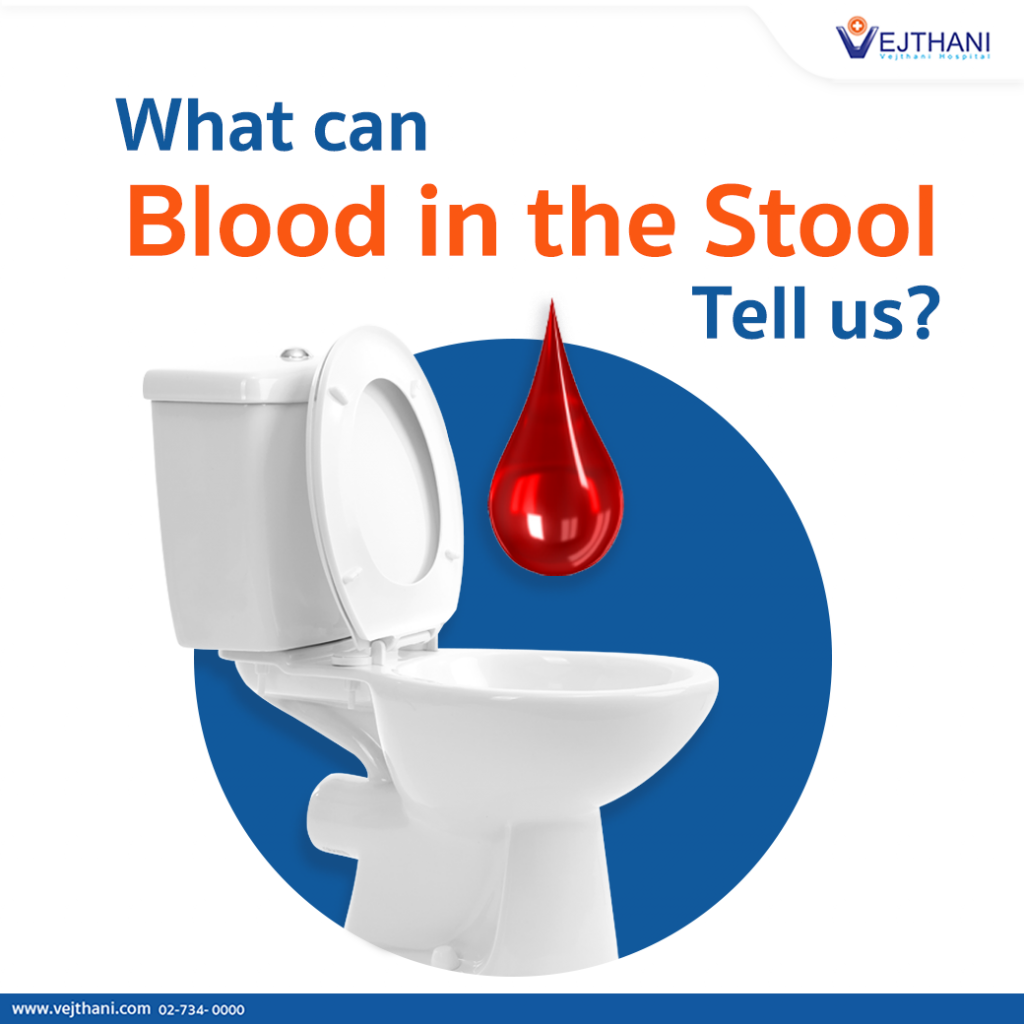Advanced Aortic Aneurysm Treatment from Specialized Surgeons
Spotting the early symptoms of an aortic aneurysm can save lives. Learn about diagnosis, prevention, and expert treatment at Vejthani International Hospital.

Stools have different textures, forms, and colors; depending on the enzyme, bile, and foods consumed. However, if there is blood in the stool and it is color red, it may imply that there are some abnormalities inside the body.
The digestive tract starts from the mouth to the tube of the esophagus, and then goes down to the stomach, to the small intestine, to the large intestine, and finally, to the anus. Thus, if there is blood in the stool, it means that one of these organs might be bleeding.
If there are some abnormalities or bleeding in the upper part of the digestive tract such as the esophagus, or stomach, usually the patient will vomit blood rather than excreting blood in the stool. In case that there is just a little bit of bleeding in the upper part of the digestive tract, the blood might come through the anus along with the stool but it will not be bright red blood, it will turn to black which js called Melena in medical term.
The common cause of bright red blood in the stool is rectal bleeding. The quantity of the blood depends on the severity of the defect in the large intestine or the anus.
Many people might think that blood in the stool is only a sign of colorectal cancer or polyps in the large intestine, but actually, blood in the stool is also a common sign of diverticulosis and angiodysplasia. Patients usually have bright red blood in the stool but have no pain sensation, except in cases where the bleeding is in the lower part of the large intestine. In this case, the patients might have pain sensation during excretion. However, colorectal cancer, diverticulosis, and angiodysplasia usually occur in the elderly. Moreover, blood in the stool is also a sign of ischemic colitis and ulcerative colitis, but it’s rarely found. These mentioned diseases need special diagnosis technique which is called colonoscopy to check for the abnormalities in the colorectal area. Besides diagnosis, colonoscopy can also be used for treatment and stop the bleeding in the colorectal area.
Blood in the stool is also one of the symptoms of hemorrhoids. Patients who have hemorrhoids usually have bright red blood after excretion and the blood appears to be separated from the stool. Basically, the patients who have mild hemorrhoids have no pain sensation, except from the patients who have severe hemorrhoids. Hemorrhoids can occur on everyone. Hemorrhoid is usually associated with constipation or diarrhea because straining during excretion can cause swollen veins in the anus and lower rectum. Blood in stool is also one of the symptoms of anal fissure and anal fistula. However, hemorrhoids, anal fissure, and anal fistula can be diagnosed by history taking and anal examination. There are several diseases that cause blood in the stool, so when you have some abnormalities, you should seek medical treatment immediately because the earlier you come to receive the treatment, the better result of the treatment you will receive.